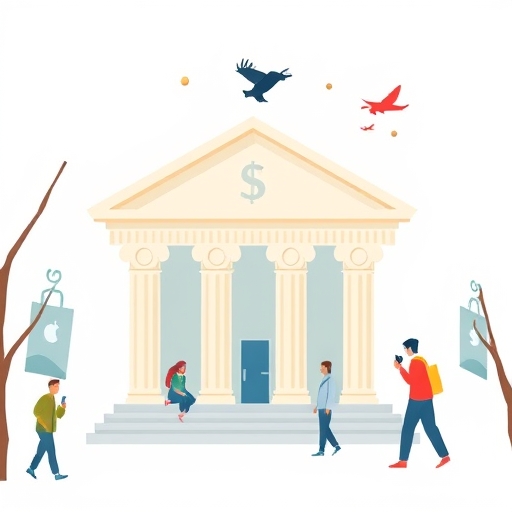What Are Good Banks for College Students?
Navigating the financial landscape as a college student can be challenging. With tuition fees, textbooks, and living expenses, it’s essential to choose a bank that meets your needs without charging unnecessary fees. In this article, we will explore the best banks for college students, considering factors such as fees, accessibility, account features, and customer service.
Why Choosing the Right Bank Matters for College Students
Choosing the right bank is crucial for college students for several reasons:
- Financial Management: A good bank can help students manage their finances effectively with tools like budgeting apps and financial advice.
- Accessibility: Students need easy access to their funds, whether through ATMs, mobile banking, or physical branches.
- Low Fees: College students often operate on a tight budget, making it essential to find banks that offer low or no monthly fees.
- Educational Resources: Some banks provide financial literacy resources that can help students make informed financial decisions.
- Account Name: Chase College Checking
- Monthly Fees: $0 (if you are enrolled in college)
- Minimum Balance Requirement: None
- ATM Access: Over 16,000 ATMs; fee-free access to Chase ATMs
- Online Banking: Robust mobile app with budgeting tools
- Educational Resources: Financial education resources available online
- Extensive ATM network
- No monthly fees for students
- Comprehensive online banking features
- Limited physical branch locations in some areas
- Account Name: Bank of America Advantage SafeBalance Banking®
- Monthly Fees: $0 for students under 24
- Minimum Balance Requirement: None
- ATM Access: 16,000 ATMs with no fees at Bank of America ATMs
- Online Banking: Excellent mobile app with budgeting tools
- Educational Resources: Offers financial literacy resources and workshops
- No minimum balance requirement
- Strong online banking capabilities
- Access to financial education resources
- Limited fee reimbursement for out-of-network ATMs
- Account Name: Wells Fargo Clear Access Banking℠
- Monthly Fees: $0
- Minimum Balance Requirement: None
- ATM Access: Over 13,000 ATMs; fee-free access to Wells Fargo ATMs
- Online Banking: Comprehensive mobile banking options
- Educational Resources: Provides budgeting tools and financial literacy content
- No monthly maintenance fees
- Easy online and mobile banking
- Wide ATM network
- Monthly fees apply after account holder turns 25
- Account Name: PNC Virtual Wallet Student
- Monthly Fees: $0 for students
- Minimum Balance Requirement: None
- ATM Access: Over 19,000 ATMs
- Online Banking: Unique Virtual Wallet feature for budgeting
- Educational Resources: Financial literacy tools and resources available
- Virtual Wallet feature helps with budgeting
- No monthly fees for students
- Extensive ATM access
- Limited availability in some regions
- Account Name: Capital One 360 Checking®
- Monthly Fees: $0
- Minimum Balance Requirement: None
- ATM Access: 39,000+ ATMs
- Online Banking: Excellent mobile app with budgeting features
- Educational Resources: Financial education resources available
- No monthly fees or minimum balance
- Great mobile banking experience
- Wide ATM network
- Fewer physical branches compared to traditional banks
Key Features to Look for in a Student Bank Account
When evaluating banks, students should consider the following features:
1. No Monthly Fees
Many banks offer student accounts with no monthly maintenance fees. This feature is crucial for students who may not have a steady income.
2. Minimum Balance Requirements
Look for accounts that do not require a minimum balance or have a low threshold. This flexibility is beneficial for students who might not always have funds in their accounts.
3. ATM Access
Having access to a broad network of ATMs without extra fees is essential. Some banks even reimburse ATM fees charged by other banks.
4. Online and Mobile Banking
A user-friendly mobile app and online banking platform can make managing finances easier, especially for students who are always on the go.
5. Financial Education Resources
Banks that offer resources like budgeting tools, financial literacy workshops, and personalized advice can help students build a solid financial foundation.
6. Overdraft Protection Options
Understanding overdraft policies is crucial. Some banks offer overdraft protection to help students avoid fees when they accidentally overspend.
Top Banks for College Students
Here’s a look at some of the best banks for college students based on the features outlined above.
1. Chase Bank
Overview: Chase offers a solid student checking account with a variety of features tailored for college students.
Pros:
Cons:
2. Bank of America
Overview: Bank of America offers a student checking account that provides great flexibility and features.
Pros:
Cons:
3. Wells Fargo
Overview: Wells Fargo provides a student checking account that is simple and straightforward.
Pros:
Cons:
4. PNC Bank
Overview: PNC Bank offers a student checking account with innovative features.
Pros:
Cons:
5. Capital One
Overview: Capital One is known for its straightforward banking options and excellent customer service.
Pros:
Cons:
Comparison Table of Banks for College Students
| Bank | Monthly Fees | Minimum Balance | ATM Access | Online Banking Features | Financial Education Resources |
|---|---|---|---|---|---|
| Chase Bank | $0 | None | 16,000+ ATMs | Robust mobile app | Yes |
| Bank of America | $0 | None | 16,000+ ATMs | Excellent mobile app | Yes |
| Wells Fargo | $0 | None | 13,000+ ATMs | Comprehensive online banking | Yes |
| PNC Bank | $0 | None | 19,000+ ATMs | Virtual Wallet feature | Yes |
| Capital One | $0 | None | 39,000+ ATMs | Great mobile app | Yes |
Tips for Managing Finances as a College Student
Managing finances can be daunting, but with the right strategies, students can stay on top of their financial situation. Here are some tips:
1. Create a Budget
Establish a monthly budget that outlines income and expenses. This will help you track your spending and ensure you live within your means.
2. Use Financial Apps
Leverage financial apps to help manage your finances. Many banks offer budgeting tools that can help you visualize your spending habits.
3. Take Advantage of Student Discounts
Many retailers and services offer discounts for students. Always ask if a student discount is available before making a purchase.
4. Avoid Unnecessary Fees
Be mindful of bank fees, late payment charges, and overdraft fees. Set up alerts to notify you of low balances or upcoming bills.
5. Build an Emergency Fund
Even a small emergency fund can provide a financial cushion for unexpected expenses. Aim to save at least a few hundred dollars.
Frequently Asked Questions (FAQ)
1. Do I need a bank account as a college student?
While it’s not mandatory, having a bank account is highly beneficial for managing your finances, receiving funds, and making payments.
2. Can I open a bank account without a Social Security number?
Yes, many banks allow international students to open accounts with a passport and student visa. Check with your chosen bank for their specific requirements.
3. How do I avoid bank fees?
Choose a student checking account with no monthly fees, maintain any minimum balance requirements, and use in-network ATMs to avoid fees.
4. What is overdraft protection?
Overdraft protection is a service that allows you to withdraw more money than you have in your account, which can help you avoid declined transactions. However, it may come with fees.
5. Can I use my student account after graduation?
Most student accounts will transition into standard accounts after you graduate or turn 25. You may want to check with your bank on their policies.
Conclusion
Choosing the right bank is an essential part of managing your finances as a college student. By considering factors such as fees, accessibility, and available resources, students can find a banking solution that meets their needs. The banks mentioned in this article offer excellent options tailored specifically for students, making it easier to focus on your education without the stress of financial burdens. Whether you prioritize low fees, online banking features, or educational resources, there’s a bank out there for you. Choose wisely, and set yourself up for financial success during your college years and beyond.





